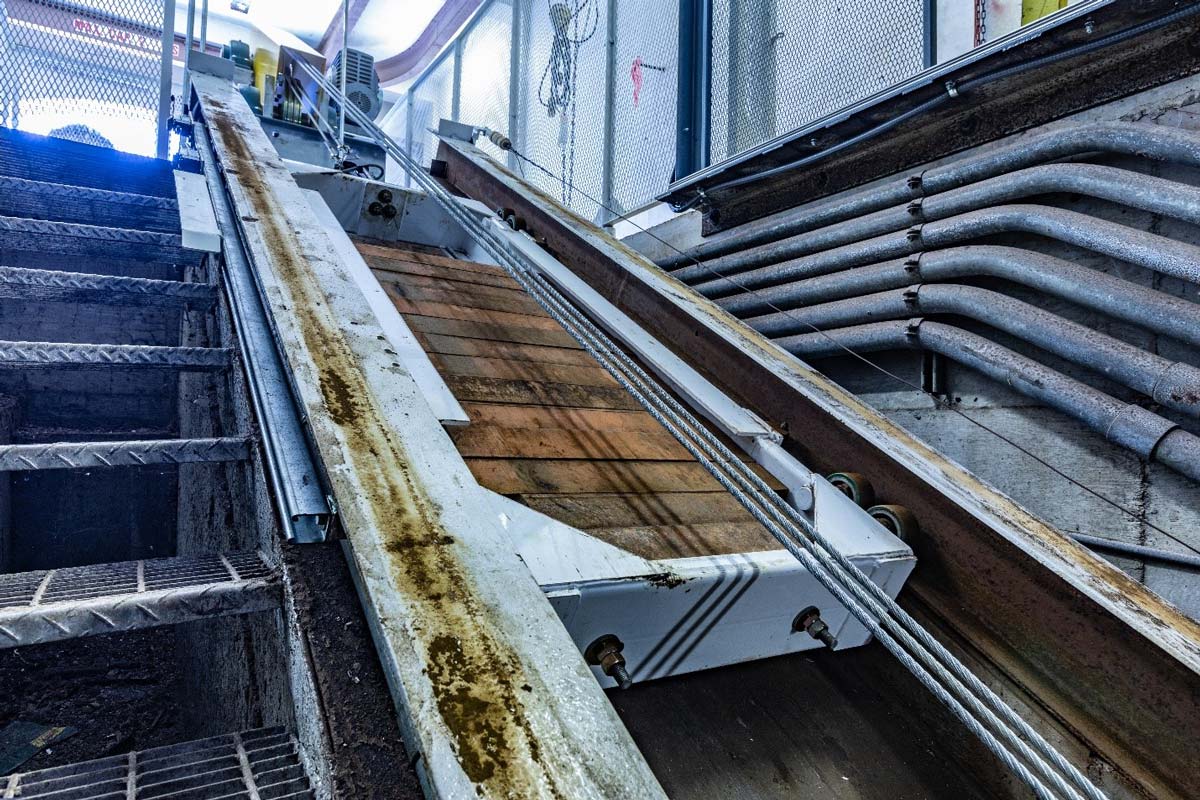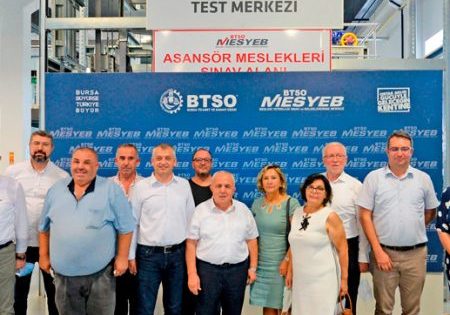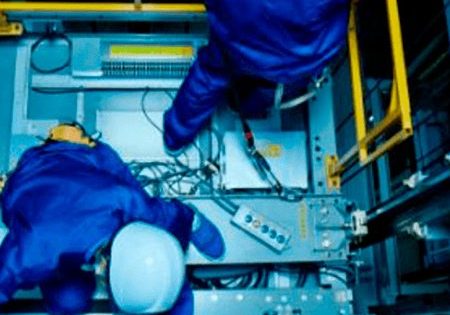Marine Innovations’ Kahaluu Water Development Shaft Project provides access to vital resource.
Photos by Angy Chesler, VIP-Concepts, for Marine Innovations
The island of Hawaii, often referred to as the Big Island, is the largest island in the U.S. state of Hawaii and home to 186,738 people. Hawaii is surrounded by the ocean, and approximately 50% of the island’s water comes from groundwater sources.[1]
The volcanic structure of the Hawaiian Islands collects rainwater and traps it in aquifers under the islands. Since freshwater is less dense than saltwater, the freshwater percolates down and forms a floating bubble, often referred to as a lens, on top of the saltwater. This freshwater is a precious commodity required for life on the island and used for residential, commercial, agricultural, resort and industrial applications.
The water is naturally transported down to the aquifers, but huge pumps, located strategically across the island, bring this water back to the surface for human use. Some of the pumps are located on the surface, while others are located deep within the earth. Four such pumps are in the Kailua-Kona area of Hawaii, and the Kahaluu tunnel access inclined elevator is an essential part of the drinking water system. The pumps need maintenance and attention. Personnel must have quick and ready access to these pumps, which are accessed by descending a 1,000-ft tunnel, along with the capacity to bring tools and supplies to the pump heads.
An inclined elevator in the pump access tunnel was installed more than 40 years ago, but the Department of Water Supply was looking for a replacement to remedy control issues and parts-wear problems, as well as increase travel speed and system capacity.
Built into a nondescript, garage-like building, the machine room had space restrictions that were only amplified by the confines of the tunnel itself. Mike Botzet of Marine Innovations was brought in by Heide & Cook Elevator to design and build the new inclined elevator system. Starting with a site visit in 2016, Botzet brought back photos and drawings of the old system to show the starting point.
Looking at the measurements, photos and past system drawings, Brent Thompson, Marine Innovations’ design engineer, started the review process to calculate motor, gearbox and brake sizes to safely increase the 1,000-ft inclined elevator from 100 ft/min to 125 ft/min and capacity from 4000 to 5000 lbs. After determining the need for a 25-hp, 460-V electric motor, an Elektrim 3 phase AC brake motor was selected as the powerhouse for this system. The motor includes a braking system to hold the system when it is stationary. A Winsmith 50:1 worm gear reducer was specified to reduce the motor speed.
Five-in. Dodge Imperial bearings support the custom 5-in. driveshaft that transfers power from the gear reducer to the 20-in. drive sheaves. A matching 5-in. shaft supports the secondary sheaves. Three 1/2-in. drive cables transfer the power from the sheaves to the carriage and counterweight. Cable rollers were installed to prevent excessive cable slack when exposed to the 1,000-ft system length.
New carriage and counterweight assemblies were built to accommodate the increased 5000-lb capacity. The carriage was designed to utilize the greatest amount of space in the confines of the tunnel. It includes an enclosed personnel compartment and forward material transportation section with removable railings. Built of tubular steel, non-skid steel and stainless-steel wire mesh, the carriage is powder coated for durability and corrosion resistance. The floor, stairs and emergency ladder treads received special slip-resistant coating.
Control stations are located at top and bottom landings. They include call station buttons for top and bottom stations, a ramp stop button and emergency stop button. The carriage control station is similar, with the addition of jog up and down ability when in manual operation mode. A Ritron wireless communications system, designed for long-range communication, was incorporated into the three control stations.
The carriage trolley is constructed from 8 in. x 2 in. rectangular steel tubing and powder coated to match the carriage. It rides on solid iron wheels with polyurethane rubber tread. Guide wheels ensure the trolley stays centered on the track. The Marine Innovations overspeed governor engages four safety brake pads, driving them into the track rail if the carriage exceeds the safety factor above the desired 125 ft/min speed, also engaging the safety shutoff switch to stop the drive system. This braking system can be easily disengaged from a control station when the safety issue is corrected.
The counterweight trolley is captive inside the track rails. Loaded with 3775 lb of ballast, this makes the elevator more efficient, saving energy when moving heavy loads over this long distance. This steel structure is powder coated white to match the carriage and provide corrosion resistance.
All design, fabrication and welding of the power frame, carriage, trolley and counterweight were done at Marine Innovations’ Frazee, Minnesota, facility. Prior to galvanizing and powder coating, all components were assembled to confirm their fit. A test station was built to replicate the exact angle of the rail in the Hawaii tunnel and test the drive and braking systems to ensure all components worked as designed. After successful testing, all assemblies were broken down and parts were powder coated and plated as necessary. Zinc galvanizing of the power frame was completed by Galvanizers Inc. of Fargo, North Dakota. Powder coating and yellow zinc plating were completed by Douglas Finishing of Alexandria, Minnesota. Slip-resistant coatings were applied by Rhino Linings, also of Fargo.
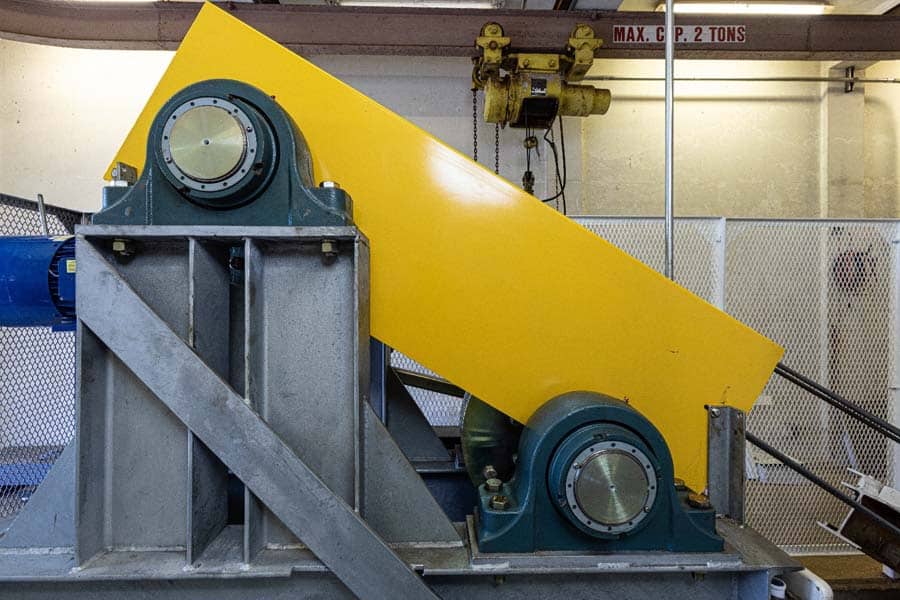

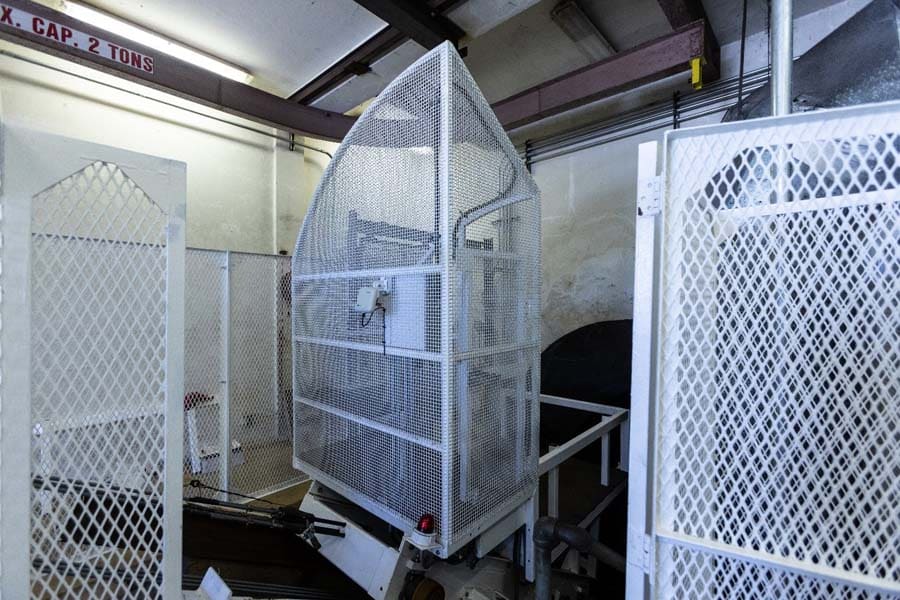

Marine Innovations developed an innovative integrated wireless communications and controls system providing crisp clear communication between the carriage and control stations. The system incorporates monitored carriage controls without the need to be hard-wired or use signal wire systems.
The existing beam track is mounted to a concrete curb. The track was inspected and deemed acceptable for continued use with the new trolley and counterweight after repairs were made on a small section, saving the Department of Water Supply the expense and time of removing and reinstalling 1,000 ft of track.
The greatest challenges to overcome with this project were engineering for the extreme length of the system and safe setting and quick release of rail brakes for the up-to-5000-lb system capacity. These systems were able to be tested prior to shipment. An additional challenge was the efficient use of the increased weight capacity in the confines of the tunnel. Marine Innovations’ CAD-CAM design software and on-site waterjet cutting system allowed for faster parts production with an extremely accurate cutting solution.
After all parts were returned to Frazee, the components were assembled. All parts were loaded in a shipping container for transportation to Heide & Cook Elevator in Hawaii for installation. Heide & Cook Elevator was able to complete installation on the Kahaluu Water Development Shaft Project in July 2020, with the only delays coming from change orders and COVID-19 travel restrictions. The inclined elevator was handed over to the Department of Water Supply after the final inspection on August 7, 2020.
System Specifications
The inclined elevator travels into the depths of the island for 1,000 ft at an angle of 31 deg. This means the system has a vertical descent/lift of 515 ft, while traveling approximately 857 ft horizontally. The inclined elevator provides transportation from the surface to the workspace and back, with one trip taking 8 min at 125 ft/min.
The inclined elevator consists of many integrated parts: controls, power frame, carriage, trolley and counterweight.
The Primex control panel houses the control system. The Schneider Altivar variable frequency drive (VFD) brings in the 480-V, 100-A service power and allows for smooth acceleration and deceleration of the carriage, preventing jarring starts and stops. The Unitronics programmable logic controller (PLC) allows for integration of controls and safety systems. The PLC also allows for remote monitoring and oversight of the elevator system.
Custom control stations are located at the top/surface landing, the lower landing and the carriage. These allow operators to call the carriage to either station, stop the carriage with the emergency stop button and communicate between stations with the integrated Ritron wireless communications system. Additionally, the carriage control panel provides a jog up and down feature when the system is in manual mode. Honeywell limit switches at both stations are hardwired to the control system to signal deceleration, stop and final limit locations for smooth, accurate landings at each station.
The power frame assembly was custom designed by Marine Innovations. It holds the 460-V, three-phase, 25-hp Elektrim brake motor. The motor is directly mounted to a Winsmith 981 50:1 gearbox to reduce the motor speed and increase torque. The rotational power output from the gearbox is carried by a custom-built, zinc-plated, 5-in. driveshaft to 20-in., zinc-plated, steel sheaves. Matching secondary sheaves also ride on a custom 5-in., zinc-plated shaft. Both shafts are secured with Dodge Type E bearings.
Power is transferred from the power frame to the trolley and counterweight by three 6 x 19 1/2-in. EIPS drive cables have a 24,000-lb rating each. The cables are connected to the trolley and counterweights with Emco wedge sockets.
The carriage has unique personnel cab and material transportation areas. The carriage frame is built from 2 in. x 3 in. x 3/16-in. wall rectangular steel tubing. The personnel cab structure is designed to fit the shape of the tunnel and built from 1 1/2 in. x 1 1/2 in. x 3/16-in. wall square steel tubing. The cab is enclosed in stainless steel mesh. Decking is 3/16-in. plate steel with slip-resistant coating. The transportation bed has removeable fence rails. There is integrated storage for the control and communications system battery and associated charger. Warning lights are mounted front and rear to alert personnel of the carriage’s movement. All parts of the assembly are either stainless steel, powder coated or coated with slip-resistant lining for corrosion protection.
The trolley is built from 8 in. x 2 in. x 1/4-in. wall rectangular steel tubing. For corrosion resistance, it was powder coated white to match the carriage. The trolley rides on four 6 in. x 3 in. solid iron wheels with polyurethane rubber tread. The trolley is centered by 8 in. x 2 in. aluminum wheels with polyurethane rubber tread. The front axle drives the Marine Innovations overspeed governor. The governor activates four custom braking pads that contact the rail in an overspeed condition and trigger the safety shut off switch to stop the drive system. The operator can disengage the brakes from the control station when the safety issue is corrected.
The counterweight trolley is constructed from 8 in. x 2 in. x 1/4-in. wall rectangular steel tube. It is powder coated white to match the carriage and trolley for corrosion resistance. Eight 4 in. x 2 in. cast iron wheels with polyurethane tread carry the 3775-lb counterweight in the track rail. Four side rollers keep the counterweight centered in the rails.
The Kahaluu tunnel access inclined elevator is integral in providing access to the freshwater supply for this community. This access is dependent on the technology, engineering and manufacturing put into the elevator system. Quality and dependability are key to the continuous operation of this elevator system. Wireless communications and controls allow for safe, secure transportation of personnel. The traction drive system will provide increased transportation capacity at a higher rate of speed. With the new inclined elevator, the people on the Island of Hawaii can rest assured that service personnel can quickly and reliably keep their drinking water source operational.
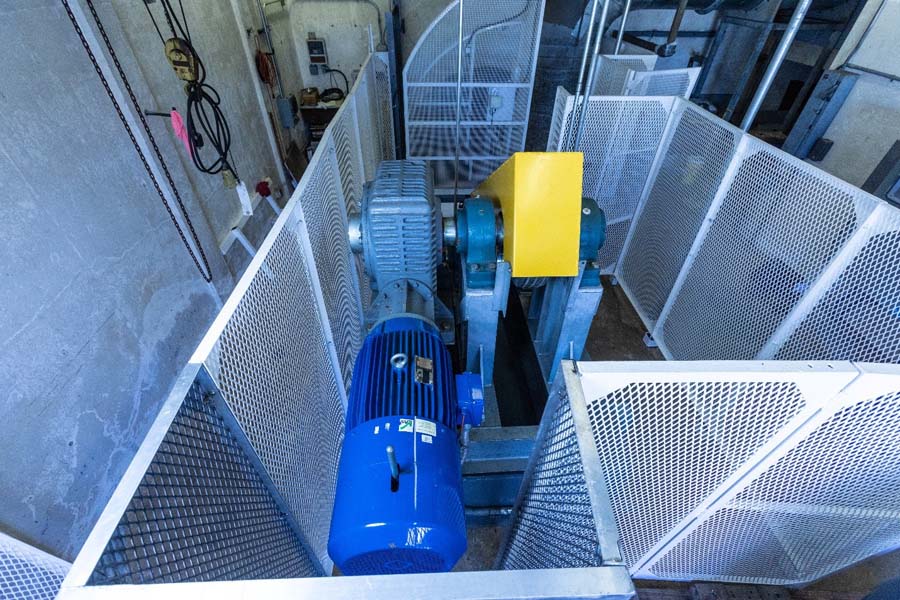


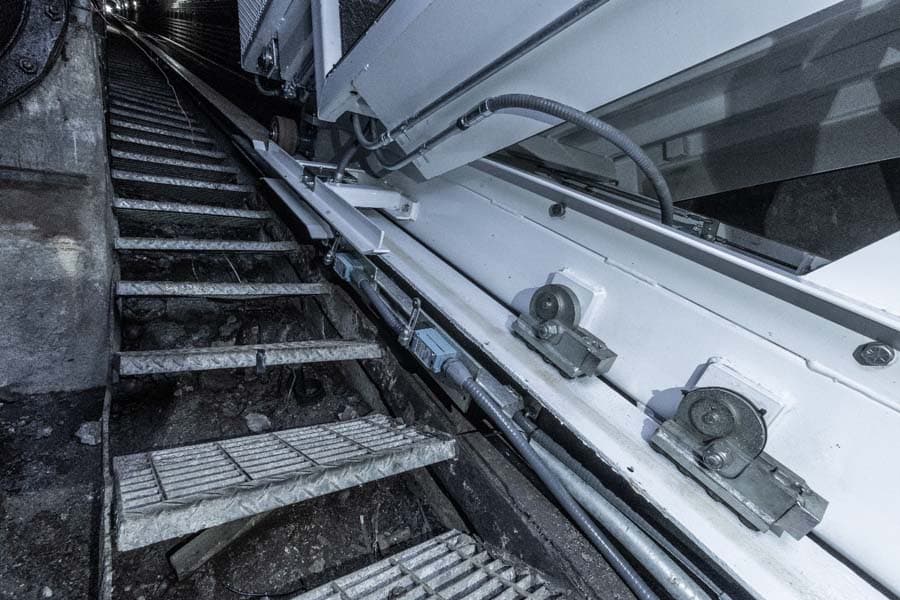
Kahaluu Tunnel Access Inclined Elevator Specifications
Building Owner: Hawaii Department of Water Supply
Design Engineer: Engineering Partners, Inc.
General Contractor: Jas W. Glover Ltd.
Elevator Contractor: Heide & Cook Elevator
Inclined Elevator Design Engineer: Brent Thompson, Marine Innovations
Equipment Manufacturers:
– Marine Innovations: power frame, carriage, trolley, counterweight
– Elektrim: motors
– Winsmith: gear reducer
– Dodge: bearings
– Primex: control panel
– Honeywell: limit switches
– Emco: elevator wedge sockets
– Ritron: communications system
Reference
[1] Commission on Water Resource Management, https://dlnr.hawaii.gov/cwrm/groundwater/
Get more of Elevator World. Sign up for our free e-newsletter.
